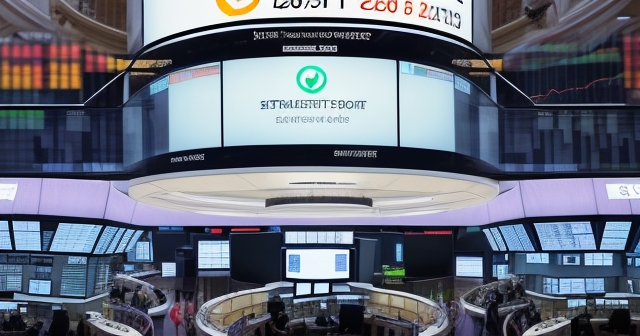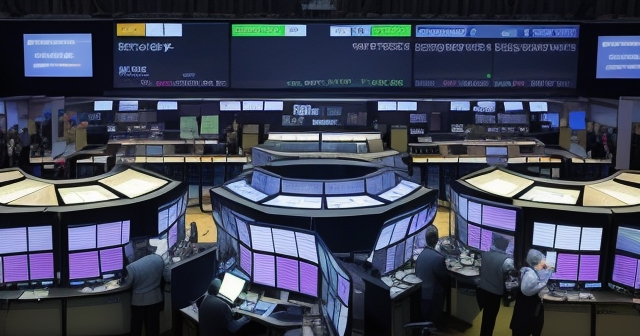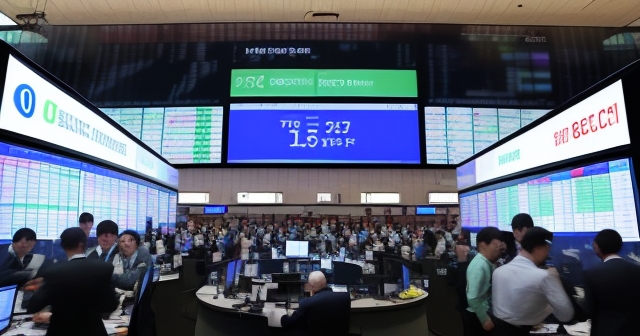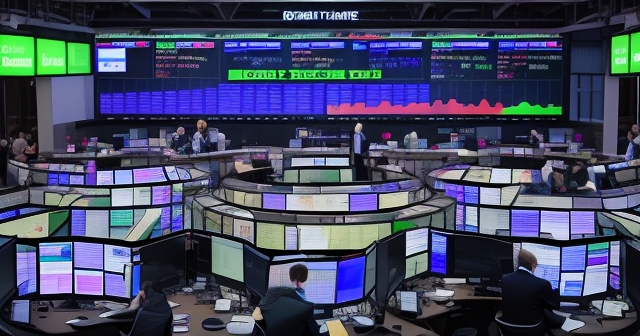Embarking on your investment journey or refining your trading strategy requires a foundational understanding of how financial markets operate. One of the most critical elements, often overlooked by beginners, is the precise timing of market activity. Knowing when an exchange opens, closes, and what happens in between isn’t just procedural knowledge; it’s strategic intelligence that can significantly impact your trading decisions and outcomes.
In Australia, the primary venue for equity trading is the Australian Securities Exchange (ASX). However, it’s not the only one, and the domestic market doesn’t exist in isolation. Global markets exert considerable influence, and their trading hours, viewed through the lens of Australian time zones, are equally important. As your guide, we’ll navigate the intricacies of the Australian stock market’s operational clock, shedding light on its core hours, special phases, holiday impacts, and its interconnectedness with the world.
Why is this so vital? Imagine placing an order only to find the market is closed, or missing a crucial price movement because you weren’t aware of pre-market activity. Understanding the structure of the trading day empowers you to set realistic expectations, manage risk effectively, and capitalize on opportunities when they arise. We’ll break down complex concepts like staggered openings and closing auctions, explaining them in a way that’s both informative and actionable.
Let’s start by anchoring ourselves to the core schedule of the most significant Australian exchange.

For many investors and traders, the main focus is on the period of Normal Trading. For the Australian Securities Exchange (ASX), this continuous trading phase runs from 10:00 AM to 4:00 PM AEST (Australian Eastern Standard Time). This is Sydney time, which is the reference point for ASX operations. During these six hours, Monday through Friday (excluding public holidays), buyers and sellers interact continuously, placing and executing orders based on prevailing market prices. This is where the bulk of daily volume and price discovery typically occurs for most securities listed on the exchange.
Think of this as the main business hours for the stock market storefront. Throughout this window, the market is liquid, meaning you can generally buy or sell shares relatively easily, assuming there are willing participants on the other side of your trade. Prices are dynamic, fluctuating constantly based on the incoming flow of orders and market news.
It’s important to note that while the core trading hours are straightforward, the processes immediately preceding and following them are more complex and critically important. The opening and closing moments, in particular, operate under different rules than the continuous trading session. Ignoring these specific phases can lead to unexpected order executions or missed opportunities.
Understanding the 10:00 AM to 4:00 PM AEST window is just the starting point. To truly grasp the rhythm of the ASX trading day, we need to explore the distinct phases that bracket this period.
| Market Phase | Description |
|---|---|
| Pre-open (7:00 AM – 10:00 AM) | The initial phase where liquidity builds, and indicative prices are shown based on orders. |
| Opening (Starting at 10:00 AM) | A staggered auction process determines the opening price for each security. |
| Normal Trading (10:00 AM – 4:00 PM) | The main trading period for executing orders continuously. |
The ASX trading day is not simply a case of opening the doors at 10:00 AM and closing them at 4:00 PM. It’s a structured cycle with several distinct phases, each serving a specific purpose in managing order flow and determining prices. Understanding these phases is crucial for anyone actively trading on the ASX.
Let’s break down the typical daily sequence, based on Sydney time (AEST/AEDT):
- Pre-open (7:00 AM – 10:00 AM): This is the initial phase where the market wakes up. No trades are executed yet, but participants can enter, change, or cancel orders. The system continuously calculates and displays potential opening prices and volumes based on the orders currently in the book. This phase allows liquidity to build and provides an early indication of market sentiment for the day. Think of it as traders submitting their wish lists before the auction begins.
- Opening (Starting at 10:00 AM): This isn’t a single moment for all stocks. It’s a staggered process, an auction mechanism designed to handle the accumulated orders from the Pre-open phase and determine the single price at which each security will open for the day. We’ll explore this in more detail shortly.
- Normal Trading (10:00 AM – 4:00 PM): As discussed, this is the main continuous trading period. Once a security has completed its opening auction, it moves into this phase.
- Pre-CSPA (Match) (4:00 PM – 4:10 PM): This phase immediately follows Normal Trading. Continuous trading stops, but participants can still enter, change, or cancel orders in anticipation of the closing auction. Similar to the Pre-open, the system calculates and displays indicative closing prices and volumes. This allows traders to adjust their positions based on the end-of-day order book.
- Closing Single Price Auction (CSPA) (Random time between 4:10 PM and 4:12 PM): This is the crucial phase where the official closing price for each security is determined. Like the opening, it’s an auction mechanism, but it occurs at a random time within a two-minute window. This randomness helps prevent manipulation of the closing price. We will look at this in more detail.
- Adjust (4:12 PM – 6:50 PM): After the CSPA, this phase allows for post-trade adjustments and corrections. Participants can perform certain maintenance functions related to executed trades. No new orders are typically entered or executed during this time, but essential post-trade processes are managed.
- Purge Orders (6:50 PM – 6:59 PM): Unexecuted orders from the day are removed from the system.
- System Maintenance / Closed (6:59 PM – 7:00 AM the next day): The market is closed for daily maintenance before the cycle begins again.
Understanding these distinct phases, particularly the differences between order entry/modification allowances in Pre-open and Pre-CSPA versus the trading execution in Normal Trading and the auction-based pricing in Opening and CSPA, is vital for sophisticated trading on the ASX.

The ASX Open is not a singular event happening at precisely 10:00 AM for every stock simultaneously. Instead, it’s a carefully designed staggered opening process that commences at 10:00 AM Sydney time and typically lasts for approximately 10 minutes. This approach manages the high volume of orders accumulated during the three-hour Pre-open phase, ensuring a smoother and more orderly price discovery process.
How does this staggering work? Securities are grouped based on the first letter (or letters) of their ASX code. The market then opens for these groups sequentially:
- Group 1 (A – B): Opening starts at 10:00 AM.
- Group 2 (C – F): Opening starts at 10:02 AM.
- Group 3 (G – L): Opening starts at 10:04 AM.
- Group 4 (M – R): Opening starts at 10:06 AM.
- Group 5 (S – Z): Opening starts at 10:08 AM.
Within each of these two-minute windows, the exact moment a group transitions from Pre-open to Normal Trading is subject to a random variation of up to +/- 15 seconds. This means Group 1 could open anywhere between 10:00:00 and 10:00:30 AM, Group 2 between 10:02:00 and 10:02:30 AM, and so on. This slight randomness prevents algorithms and traders from predicting the exact millisecond of the open, promoting fairer competition.
For securities newly listed or resuming trading after a halt, their opening time may differ slightly but generally follows a similar auction-based process around the standard opening window. The purpose of this staggered, auction-based open is to determine a single, equilibrium price that clears as many orders as possible based on the supply and demand built up in the Pre-open phase. This prevents large price gaps or volatility spikes that might occur if all stocks opened simultaneously and immediately into continuous trading.
As a trader, being aware of these groups and the random variation is important, especially if you’re trying to enter or exit a position precisely at the market open. Orders placed during Pre-open are ranked by price and time priority, and the opening auction matches them to determine the initial trading price for the day.

Just as the market doesn’t simply ‘switch on’ at 10:00 AM, it doesn’t simply ‘switch off’ at 4:00 PM. The final official price for the day on the ASX is determined through a Closing Single Price Auction (CSPA). This is another auction mechanism, similar in principle to the opening auction, designed to aggregate all orders valid for the close and determine a single price at which the maximum volume can be traded.
The CSPA period runs from 4:00 PM to a random time between 4:10 PM and 4:12 PM Sydney time. The first 10 minutes (4:00 PM – 4:10 PM), known as the Pre-CSPA or Match phase, allows participants to enter, change, or cancel orders. The system displays indicative closing prices and volumes based on the current order book, allowing participants to adjust their strategies before the auction concludes.
At a random moment within the 4:10 PM to 4:12 PM window, the auction is held. The system finds the price that results in the largest volume traded, based on the accumulated buy and sell orders. This price becomes the official closing price for the security for the day. All trades executed in the CSPA happen at this single determined price.
Why the randomness? Similar to the opening, the random close time (within the 2-minute window) makes it impossible for traders or algorithms to know the precise second the auction will run. This reduces the potential for manipulation attempts right at the last moment, aiming for a fairer closing price that reflects the true supply and demand aggregated in the Pre-CSPA phase.
The closing price is highly significant. It’s used for valuing portfolios, calculating daily performance, and often serves as a key reference point for the next day’s trading. High volumes frequently trade during the CSPA as large institutions and index funds execute orders to align with benchmarks or manage their positions at the official close.
Understanding the CSPA is crucial if you intend to trade into or out of the close, or if your trading strategy relies heavily on end-of-day prices. Orders marked as ‘good for day’ typically participate in the CSPA if not already executed during Normal Trading, while specific ‘at close’ orders are only valid for the CSPA itself.
| Exchange | Trading Hours (AEST) | Notes |
|---|---|---|
| NSX | 10:00 AM – 4:00 PM | No lunch break, focuses on smaller enterprises. |
| Cboe Australia | 10:00 AM – 4:13 PM | Slightly later closure than ASX. |
| NZX | 7:00 AM – 1:45 PM | Opens three hours before ASX. |
While the ASX is the dominant player, it’s not the only exchange operating in the region. The National Stock Exchange of Australia (NSX) and Cboe Australia (formerly Chi-X Australia) also provide listing and trading venues. Their hours are similar to the ASX, but with some key differences:
- National Stock Exchange of Australia (NSX): The NSX trading hours are typically 10:00 AM to 4:00 PM AEST, Monday through Friday. The NSX operates a continuous trading model without a lunch break. It focuses more on smaller and medium-sized enterprises.
- Cboe Australia: Cboe Australia, a competing exchange market operator, has slightly different trading hours. Their continuous trading session runs from 10:00 AM to 4:13 PM AEST, Monday through Friday. Notice the slightly later close compared to the ASX. Like the ASX, Cboe also has pre-open and post-close phases, though the exact timings and processes may differ in detail from the ASX’s specific CSPA mechanism. Many brokers offer access to both ASX and Cboe markets.
Beyond Australia, our nearest neighbour, New Zealand, has its own exchange, the New Zealand Exchange (NZX). Given the close economic ties, movements on the NZX can sometimes provide early indicators or context for the Australian market. The NZX trading hours in local New Zealand Daylight Time (NZDT) are 10:00 AM to 4:45 PM, Monday to Friday, also without a lunch break. When converted to Australian Eastern Standard Time (AEST), this corresponds roughly to 7:00 AM to 1:45 PM AEST. This means the NZX opens three hours before the ASX and closes midway through the ASX’s Normal Trading session.
Understanding the hours of these other exchanges is important if you trade securities listed on them or if you use them as a proxy for broader market sentiment in the Australasian region. While their influence on the major ASX indices is less significant than the ASX itself, they are part of the overall regional market ecosystem.

No stock market operates in isolation, especially not in today’s interconnected global economy. Events and price movements in major international markets can significantly influence the sentiment and performance of the ASX when it opens. Therefore, understanding when major global exchanges are active relative to Australian time is essential.
Here’s a conversion of some key global market hours to Australian Eastern Standard Time (AEST) and Australian Western Standard Time (AWST, which is 2 hours behind AEST). Note that these times can shift slightly when different regions move to or from daylight saving time.
- United States (NYSE & Nasdaq): These are the world’s largest stock markets. Their standard trading hours (9:30 AM – 4:00 PM EST/EDT) convert to:
- 12:30 AM – 7:30 AM AEST (Sydney, Melbourne, Brisbane)
- 10:30 PM – 5:30 AM AWST (Perth)
This means the US market is active while Australia sleeps. Significant news or price movements in New York will directly impact the sentiment and often the opening price of the ASX the next morning. This is a major factor influencing the ASX Pre-open phase.
- United Kingdom (London Stock Exchange – LSE): A major European hub. Their standard trading hours (8:00 AM – 4:30 PM GMT/BST) convert to:
- 6:00 PM – 2:30 AM AEST
- 4:00 PM – 12:30 AM AWST
The LSE opens in the late Australian afternoon/early evening and closes overnight AEST. Its activity overlaps with the final hours of the ASX trading day and precedes the US market open.
- Europe (e.g., Euronext, Bourse Frankfurt): Major continental European exchanges generally operate similar hours to London.
- Typically around 6:00 PM – 2:30 AM AEST onwards, depending on the specific exchange and time zone differences (CET/CEST).
These markets are also active during the Australian evening and overnight, contributing to the global picture that the ASX reacts to at its open.
- Asia (e.g., Tokyo Stock Exchange, Hong Kong Stock Exchange): These markets operate earlier in the global cycle.
- Tokyo Stock Exchange: Roughly 10:00 AM – 4:00 PM AEST (including a lunch break). This overlaps significantly with the ASX Normal Trading hours.
- Hong Kong Stock Exchange: Roughly 12:30 PM – 5:00 PM AEST (with a lunch break). This also overlaps with the latter half of the ASX trading day.
Activity in major Asian markets can influence the sentiment during the Australian trading day, particularly in sectors with strong regional ties.
Understanding this global timetable highlights the continuous nature of equity markets worldwide. When the ASX closes, markets in Europe are still active, followed by North America. When the US closes, Asian markets begin to open, and by the time the ASX opens, Asian markets are well into their day. This constant flow of information and trading activity means that overnight developments can be crucial drivers for the next day’s prices on the ASX.
Paying attention to how global markets performed while the ASX was closed is a vital part of preparing for your trading day. It can give you clues about potential opening gaps and overall market direction.

Stock exchanges, while operating five days a week, are not immune to national holidays. Australian exchanges, including the ASX, NSX, and Cboe, observe nationally recognised public holidays, meaning they are closed for trading on these days.
Common public holidays when Australian exchanges are typically closed include:
- New Year’s Day (January 1)
- Australia Day (January 26)
- Good Friday (around March/April)
- Easter Monday (around March/April)
- Anzac Day (April 25)
- Queen’s Birthday (various dates by state, though some financial market closures align nationally)
- Labour Day (various dates by state, typically market impact is for nationally recognised closures)
- Christmas Day (December 25)
- Boxing Day (December 26)
It’s important to note that public holidays can sometimes fall on a weekend, in which case a public holiday may be observed on the following Monday. State-based holidays can also affect trading, although major financial markets usually align with national or significant state holidays (like those in NSW where the ASX is based).
Furthermore, there can be exceptions or variations to the standard schedule. Occasionally, exchanges may have shortened trading days, particularly around major holidays like Christmas or New Year’s Eve, although this is less common for Australian exchanges compared to some other global markets.
The most reliable way to stay informed about exact holiday closures and any potential special trading hours is to consult the official calendars published by the exchanges themselves (e.g., the ASX website). Your brokerage platform should also provide notifications about upcoming closures.
Attempting to place orders or expecting executions on a public holiday will, of course, be unsuccessful. Knowing the holiday schedule well in advance allows you to plan your trades, manage positions that might be held over a long weekend, and adjust your strategy accordingly. Holding positions over a public holiday means you are exposed to any news or global market movements that occur while the Australian market is closed.
Understanding Australian stock market hours isn’t just about knowing when you can trade; it’s about incorporating this knowledge into your trading strategy. The timing of your actions can have a significant impact on your results.
Consider the following strategic implications:
- Volatility at the Open and Close: The opening and closing auctions (and the periods immediately preceding them) often see the highest volatility and trading volume of the day. This is when accumulated overnight orders are processed (at the open) and when large participants often execute trades to achieve the official closing price (at the close). For active traders, these periods can offer opportunities due to larger price swings and liquidity. However, they also carry higher risk due to potential volatility.
- Overnight Risk: Because the US and European markets trade while Australia is closed, significant news events (economic data releases, company announcements, geopolitical events) or major price movements in these global markets can lead to substantial gaps in Australian stock prices at the next day’s open. If you hold positions overnight, you are exposed to this ‘gap risk’. Strategies that involve holding positions overnight must factor in this potential volatility driven by international events.
- Pre-Open Analysis: The ASX Pre-open phase, from 7:00 AM, provides valuable clues. By observing the indicative prices and volumes, you can gauge the likely opening price and market sentiment for individual stocks and the market as a whole. This information can help you refine your trading plan before the market officially opens for continuous trading.
- Order Placement Timing: Understanding the different market phases dictates when you can place, modify, or cancel different types of orders. For example, placing a limit order during Pre-open allows it to potentially participate in the opening auction, while placing it during Normal Trading means it will only be eligible for continuous execution. Orders valid ‘at close’ must be entered before the CSPA concludes.
- Synchronization with News: Economic data releases, company earnings announcements, and other market-moving news often occur at specific times, sometimes before market open, during trading hours, or after market close. Knowing the trading schedule helps you anticipate when such news might impact prices and plan your reaction accordingly.
- Trading Global Instruments: If you trade international stocks, ETFs, or other instruments linked to global markets from Australia, knowing the AEST/AWST conversion of those markets’ hours is non-negotiable. Trading US stocks, for instance, means trading during Australian overnight hours. This requires a different approach to monitoring and execution, potentially impacting your sleep schedule!
Effective traders don’t just react to the market; they understand its mechanics, including its clockwork. Integrating this knowledge into your strategy allows for more informed decision-making and better risk management.

Despite the clear schedule, it’s surprisingly easy to make mistakes related to market timings. Being aware of these common pitfalls can help you avoid costly errors.
Here are some frequent mistakes we observe:
- Ignoring the Pre-open: Failing to check the market activity during the Pre-open phase means missing valuable signals about likely opening prices and sentiment. This pre-market period is not just idle time; it’s the market digesting overnight news and preparing for the day.
- Misunderstanding Auction Mechanisms (Open & Close): Assuming the open and close are just like continuous trading can lead to unexpected execution prices. The single-price auction nature of the ASX Open and CSPA means orders are matched differently than during the day. Not understanding how your orders interact in these auctions can be problematic.
- Forgetting About Holidays: It seems obvious, but forgetting a public holiday closure can mean leaving orders active when the market is shut, or being unable to react to news that breaks over a long weekend. Always check the exchange holiday calendar.
- Underestimating Global Market Impact: Focusing solely on the ASX hours without considering what happens in the US or Europe overnight is a major oversight. Significant overnight moves are key drivers of the ASX open.
- Missing Order Entry Deadlines: Each market phase has rules about when you can enter, change, or cancel orders. Missing the deadline for the Pre-CSPA phase, for example, means you can’t adjust your orders before the final price is set in the CSPA.
- Trading During Illiquid Times (if applicable): While the core ASX hours are generally liquid, very early pre-open or late post-close periods (on other platforms offering extended access, not standard ASX phases) can have low volume, leading to wider spreads and potentially unfavorable execution prices. Stick to core hours or understand the risks of illiquidity.
- Incorrect Time Zone Conversions: When dealing with global markets, miscalculating the time difference between your local time and the exchange’s time (or the standard AEST/AWST reference) is a simple error with significant consequences. Always double-check time zone conversions, especially around daylight saving changes.
Avoiding these mistakes requires diligence and a commitment to understanding the operational rhythm of the markets you trade. The market clock is a fundamental tool; know how to read it accurately.
Understanding market hours naturally leads to thinking about *how* you access these markets. Not all trading platforms offer access to all exchanges or support trading across all market phases or global time zones. The platform you choose can significantly impact your ability to implement strategies based on timing.
If your strategy involves trading on the ASX during its standard trading hours, most Australian-based brokers will provide access. However, if you wish to participate in the Pre-open or Pre-CSPA phases, or specifically place orders for the ASX Open or CSPA, ensure your platform supports the necessary order types and allows order management during those phases.
Furthermore, if you plan to trade international markets, you’ll need a platform that offers access to exchanges like the NYSE, Nasdaq, LSE, or others. Trading these markets from Australia means placing trades during Australian evening and overnight hours. Your platform must not only provide access but also potentially offer features like 24/7 support (or support during the relevant global trading hours), and reliable mobile access if you’re trading outside traditional business hours.
Some platforms also offer access to other asset classes like forex, commodities, or indices via products like Contracts for Difference (CFDs). These markets often have different, sometimes near 24-hour, trading schedules, which can complement or complicate equity market timings. The flexibility and range of instruments offered by a platform can be a key consideration depending on your trading style and diversification goals.
If you’re just starting out or looking to explore a wide range of financial instruments, including those outside traditional equity hours or on global markets, the capabilities of your trading platform are paramount. Reliable execution, access to relevant market data during different phases, and supportive customer service can make a real difference.
Choosing the right tool for the job – your trading platform – is as important as understanding the rules of the market, including its operating hours.
Conclusion: The Timeless Importance of Timing
Mastering the nuances of Australian stock market hours is far more than just knowing when the market is open. It involves understanding the specific mechanics of the ASX Open and ASX Close, the purpose and activity within each ASX Market Phase, and how Australian trading hours fit into the broader global financial ecosystem.
We’ve seen how the staggered opening and the Closing Single Price Auction (CSPA) are designed to manage liquidity and determine fair prices at the start and end of the trading day. We’ve explored the role of other Australian exchanges like the NSX and Cboe and noted the impact of the NZX hours relative to AEST.
Crucially, we’ve highlighted how global market movements, particularly those in the US and Europe occurring while the ASX is closed, are significant drivers of the next day’s Australian trading activity. Being aware of these international influences, coupled with knowing the public holidays and any special schedules, allows you to anticipate market behaviour and avoid common trading pitfalls.
For both new investors finding their footing and experienced traders refining their edge, a deep respect for market timing is a characteristic of successful participation. It informs when to place trades, when to expect volatility, when to be wary of overnight risk, and ultimately, how to position yourself effectively within the structure of the trading day.
Treat the market’s schedule as a fundamental part of your analysis, just like charts or financial statements. By understanding the clockwork of the Australian stock market hours and their global context, you build a stronger foundation for making informed decisions and navigating the path towards your financial goals.
australia stock market hoursFAQ
Q:What are the normal trading hours for the ASX?
A:The normal trading hours for the ASX are from 10:00 AM to 4:00 PM AEST, Monday through Friday.
Q:How do public holidays affect trading on the ASX?
A:The ASX is closed on nationally recognized public holidays, which can sometimes impact trading schedules.
Q:What is the significance of the Pre-open phase?
A:The Pre-open phase allows traders to enter orders and gives early indications of market sentiment for the day.

留言